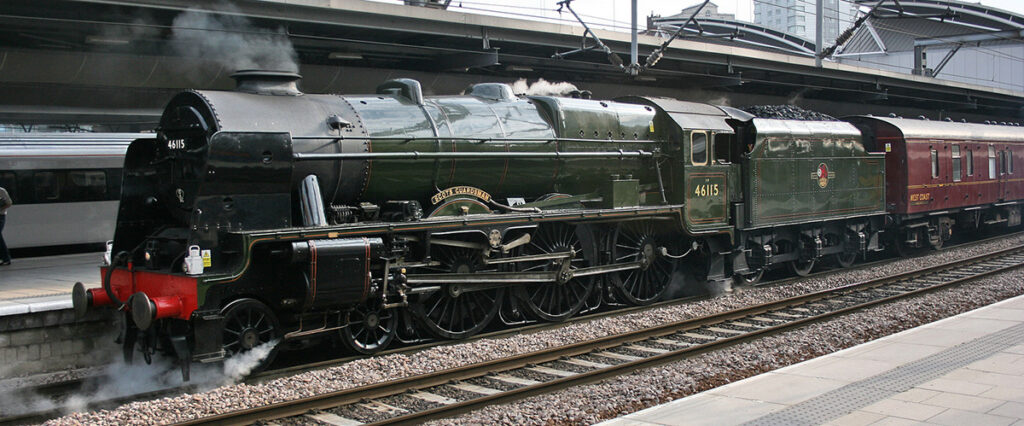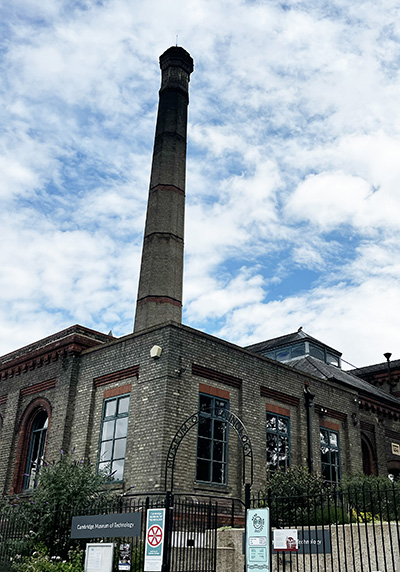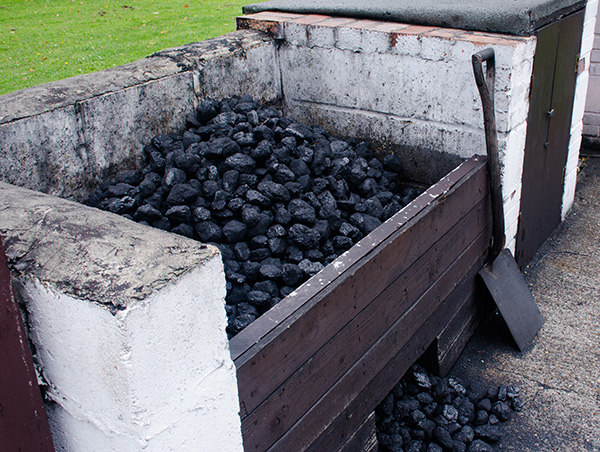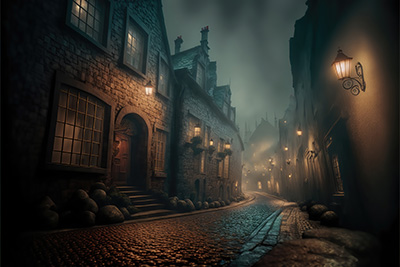This article began as a childhood memory about a bunker of coal. After asking a few people if they had any story or recollections about coal, it became clear that many did. Given the recent ban on domestic house coal sales in England and the massive effect coal has had upon our world, I thought it would be nice to explore a little part of the history and to collect some personal memories. If you have a personal story or memory, please send it to us and we’ll add it to the collection at the end of this article. Please note, it’s not a debate about the pros and cons of coal, nor does it seek to explore any aspects of the impact of fossil fuels, we’d just like the stories. L. Wight.
The sale of house coal as a domestic fuel in England came to an end on 1st May 2023.
Coal use in the UK has been declining for many years with plummeting industrial consumption and domestic solid fuel users increasingly switching to smokeless coal and particularly to renewable wood logs. But lots of us will remember a ‘real coal fire’, if not in our own house, then perhaps at grandparents or friends. It was after all the most common heating in the UK for a great many years. The sight, sound and smell of burning coal can evoke strong memories. These days it can also provoke some strong objections on environmental grounds, although it’s well worth knowing that current air quality in the UK is better than it’s been in our lifetimes (see National Statistics). Before central heating though, most people’s warmth came from coal and much of home of life would happen around the open fire in the living room or the cooking range in the kitchen.

Many people will have personal stories centred around coal which are within living memory. Some of these mark profound events in our modern history. Events like the great smogs of London which led to the Clean Air Act or the Aberfan disaster in South Wales which occurred when a mining slag heap collapsed, engulfing part of the village and its primary school. 116 children and 28 adults were killed. The miners’ strike and the closure of many mines in the 1980’s decimated some communities, altered the power of trades unions and ushered in a new political era. All these and a lot more are etched into a collective national memory precipitated by coal.
Medieval Coal
Coal, Sewage and Circularity
Lawson Wight recalls ‘The Bunker Incident’
Christine Wilson London Smog – 1952
Student Parties and Miners Baths
Coal: Power and Wealth
Coal was staggeringly important to everyone for hundreds of years, and our world would be a very different place without it. It didn’t just heat homes; it powered the entire industrial revolution. But even before the industrial revolution, access to coal meant money and power – control of mines was heavily fought over during the English Civil War in the mid-17th century. Without the huge domestic coal reserves, there could arguably have been a very different British empire and possibly even a different outcome to WW II.
Medieval Coal
We think of coal as a relatively modern industrial product, but it was being mined on a huge scale long before the invention of steam engines. In medieval times, from about 1575, the town of Culross (pronounced Coo-riss) on the east coast of Scotland was a world centre for mining innovation. A couple of years before this, coal was in such short supply that an Act of Parliament had banned its export (it’s slightly ironic that we now import most of our coal). Flooding was a constant problem for all mines at this time and as such, their depth was greatly limited. Culross operator Sir George Bruce had come across the ‘Egyptian Wheel’ system of a vertical ‘chain of buckets’ to remove water from a deep well. Powered by horses, he used this mechanism to successfully drain his mine, which allowed for much deeper excavation. Bruce discovered that the coal seam at Culross extended below the waters of Firth of Forth. He went on to construct a watertight offshore ‘moat’ or low tower which rose above sea level. From this they dug down to meet the underwater seam and linked it to the onshore workings and it became the first ever mine under the sea. We can only imagine what conditions might have been like, although there was no shortage of curious visitors, and mining authorities flocked to Culross to learn the new technologies.
Apart from fuel for heat, the Culross coal mine supplied a huge local salt making industry. Sea water was evaporated in large ‘pans’ using the plentiful coal as fuel. Hundreds of tonnes of salt were produced every month, supplying most of Scotland as well as significant exports to England, Holland, Germany. The ships that came to carry coal and salt away needed to arrive with a cargo of heavy ballast to prevent them from sinking. This sometimes took the form of terracotta roofing pantiles from Holland and to this day many of the older buildings in Culross have the original red terracotta tiles instead of the usual Scottish grey slate. The availability of cheap local coal also spawned successful metalworking industries.
All this activity was happening during the reign of Queen Elizabeth 1st, none of it possible without coal.

Coal, Sewage and Circularity
Leaping forward 300 years to 1894, two huge steam engines were being installed at the new sewage pumping station in Cambridge. The city was suffering a similar problem to the Great Stink of London four decades earlier, when the capital was virtually paralysed by a heatwave and the appalling odours from thousands of tonnes of rotting sewage in the Thames. This was accompanied by terrifying outbreaks of cholera, typhoid and other diseases. The Cambridge authorities and colleges which backed onto the river Cam were keen to solve their own stink by pumping their sewage a couple of miles around the city centre to a new works. The furnaces that powered the pumps burned household rubbish so hot they were named ‘Destructor Furnaces’. Much of the rubbish collected was ash from domestic fires which often still contained bits of coal fuel. It was transported to the pumping station by the ‘Dustmen’ and sifted to extract the viable fuel to be used in the furnace. So, waste coal from the city’s open fires powered the pumps which moved the sewage, which prevented disease and saved lives. The sewage was used to fertilise fields on which horses were fed. These horses were used to cart the rubbish to the pumping station in the first place. The waste ash and cinders were finally used for making roads and paths around the city. Today this is known as circularity.
In compiling this article, many snippets of forgotten information have come to mind, such is the extent to which coal is woven into the history of our country. Did you ever hear stories of pregnant women developing a craving to eat coal? Did your grandparents ever threaten you with being ‘sold to the sweeps’ for misbehaving? What about muscle bound miners washing one another’s backs after a shift? Or the Scottish tradition of first footing at New Year? Along with the obligatory bottle of whisky, pieces of coal would be presented to the householder as a goodwill token. In the past, even total strangers would be admitted at New Year as long as they carried these all important ‘passports’.
‘Slack’ and ‘dross’, is the cheap and small coal which was used to bank up and slow down fires e.g. overnight. These words continue today albeit with new negative meanings. The expression ‘canary in the coalmine’ has come to mean a warning signal about a danger. There must be lots of instances of coal related words in common use today.
Many aspects of people’s lives have already passed since the decline of coal. No more children being sent out in the cold to fetch a scuttle from the bunker, no more tin baths in front of the fire. Would anyone remember fetching glowing embers from the neighbour to start the fire when the matches had run out? What about the somewhat mysterious visit from ‘The Sweep’? Some of the positive things like social clubs and educational societies in mining communities and colliery brass bands have inevitably declined.

Lawson Wight recalls ‘The Bunker Incident’
I had a set of grandparents who lived near Clacton in Essex. They ran their whole house on coal and anthracite. They had 2 open fires, a Rayburn for cooking and a Parkray for room heating, central heating and hot water. We visited on one occasion when I was about nine. My three younger brothers and I were fairly obsessed with fires, we had none in our house, and a bonfire was considered a serious recreational activity. We reconned that staying in a house where fires needed to be lit every day was brilliant, and there was usually a fight over whose turn it was to operate the magnificent gas poker.
There were 2 large coal bunkers near the back door. At school, I’d been learning that fossils were often found in coal. A plan was quickly hatched, and the smallest brother (4 years old) was willingly lowered into the bunker with instructions to search out the biggest pieces. My grandfather had an excellent collection of woodworking tools, and we wasted no time in gathering a set of nice sharp chisels, some hammers and began cleaving and smashing the lumps, expecting at any moment to reveal a magical ancient fossil.
Four small but determined boys can bash a lot of coal in a short time and soon the paving, the path and a section of the highly manicured lawn were covered in little pieces. I daresay we were filthy.
My grandfather discovered us first and one look at his face was enough to bring us all to a silent halt. He wasn’t happy, if you’ve ever watched coal burning, those big lumps are very useful as they’re often added once the fire is well established, and they glow with a long radiant heat. Now it was all smashed up and we’d made a right mess.
During moments like this, being the eldest has disadvantages as the questions and accusations were directed at me. Luckily my parents and grandparents had learned that if caught together doing something we shouldn’t, it was generally best to spread the blame around. I think once we explained the fossil hunt, the anger subsided, and our only punishment was to clear it all up. We found no fossils.
Christine Wilson London Smog – 1952
Christine lived in London at the time of the Great Smog in 1952. These ‘pea soupers’ were natural fog events made far worse by the huge mass of particulate soot and acids emitted from power stations, trains and domestic fires – all running on polluting coal.
Christine said: “I remember being sent home from school early as very few teachers had made it to work. All the busses had stopped running too, so I had to walk a long way home. It was very difficult to see any landmarks and I didn’t really know where I was. I remember being quite frightened. When I got home all my clothes were filthy and I felt a bit unwell”.

Student Parties and Miners Baths
John Sowerby grew up in Preston, Lancashire. He told me of his student days in the late 1950’s saying: ‘We lived in a four-storey terrace in Preston. On the pavement outside, there was a paving slab with a hole in it. You could lift the slab with a finger, and this was where the coalman emptied the bags straight into the cellar. I’d catch the 4am milk train home after many a night out in Manchester. I had no key and so going through the coalhole and the cellar was my only way back into the house. My mother was never pleased with the state of my trousers.”
John also mentioned something he’d heard about miners. He said ‘Mining was so physical some of them (miners) became ‘muscle bound’ to such an extent that they couldn’t reach round to wash their own back. As collieries developed and men were able to wash on-site, they’d help one another by washing their mates back’.
If you have a story or memory about coal, we’d love to consider it for adding to it to the others below. Send your story to: www.info@guildofmasterchimneysweeps.co.uk or go to ‘Contact Us’ on the website and use the form.
Ben’s ‘Bomb’ – published Sept ’23
My family home was on the edge of the fens, just outside Cambridge. We had an open fire burning coal in the living room. In the early eighties when I was about 5 years old, my younger sister (3 yrs) and I were with my dad when he went to re-fuel the fire as usual. Shortly after tipping some coal from the bucket, there was a large explosion which blew the fire apart. My sister had to go to hospital where she had surgery to remove some bits from her foot. All was well with her in the end.
It turned out there was a live detonator mixed in with the coal, accidentally left over from the mining – a private mine somewhere near Mansfield. I remember someone coming from the company and some compensation money being mentioned.
Ben House, Cambridge






